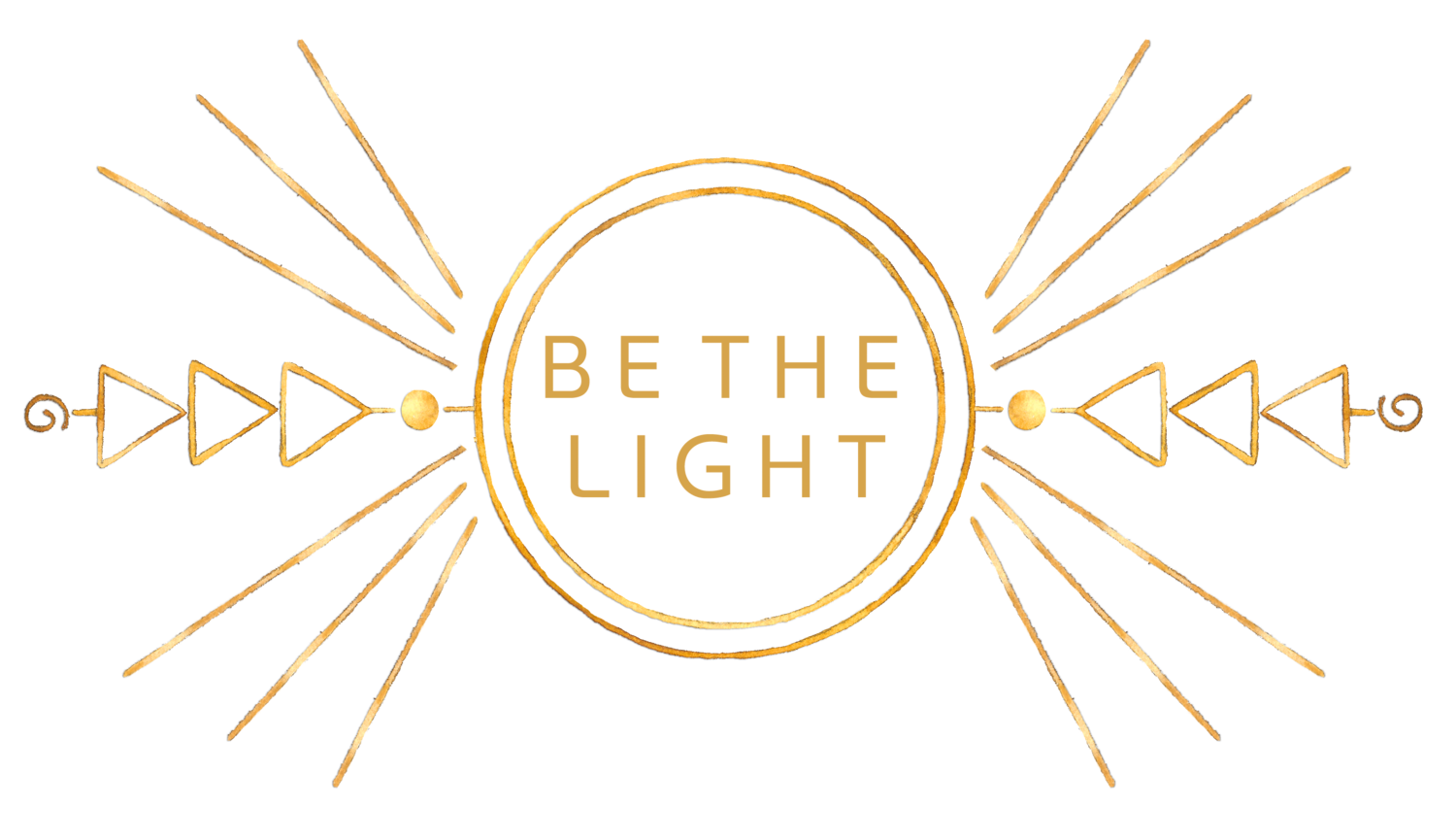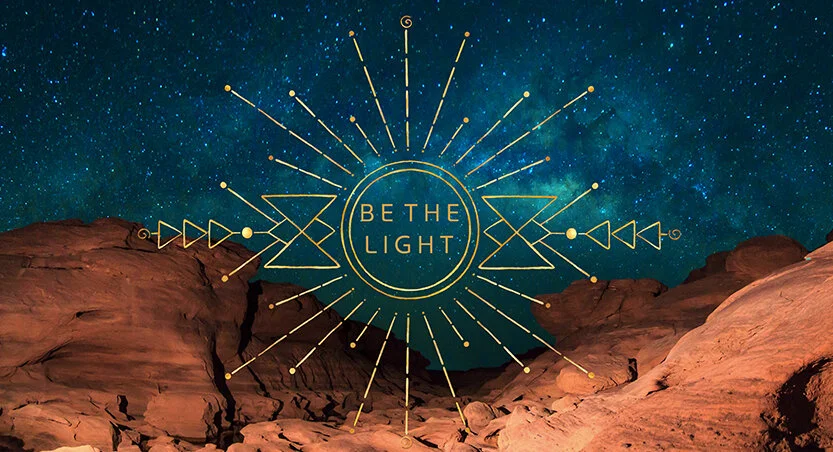Did you know that renowned psychiatrist Carl Jung went through his own emotional breakdown? To help himself heal he recorded his dream images and inner dialogue in a large red-leather bound journal that, for many years, was unreleased to the public. Then, in 2009, it was published under the simple title “The Red Book”. When I first saw it in this PerenniaLight YouTube video, “A Quick Look Inside Carl Jung’s Red Book (Philemon Edition),” I was so struck by how many of the images Jung painted were shamanic. Here are just a few examples, but there are so many more! (I’m including timestamps for where PerennialLight shows the images I’m referencing).
4:00: The intertwining serpents or DNA, drawn in the stem of the letter “D,” grabbed my attention right away. They brought to mind Jeremy Narby’s book Cosmic Serpent: DNA and the Origins of Knowledge. The red and blue colors of the “DNA” reminded me of the Saami people, whose traditional dress features reds and blues. And the eye (found in the hole of the “D”) is significant in multiple shamanic cultures, most famously in Egyptian shamanism. An interesting side note: Many years ago, my friend Erin trained in Holotropic Breathwork with Stansilav Grof at the Omega Institute in Rhinebeck, New York. (Which seems to be a very shamanic method, involving breath work, drumming, and journeying.) Nearly everyone in her class saw a huge eye during one of the journeys, and it was a big class!
My eye moving to the lower part of the curve in the “D” noticed the vine and flowers, which looked like some artistic renderings I’ve seen depicting Ayahuasca. It also reminded me of the tree of life and the Egyptian lotus. I’ve seen similar vines and flower images in a lot of shamanic artwork, but those are the ones that I immediately thought of.
5:18: The pattern Jung uses here looks very shamanic to me. I see spirals, trees, and snakes. It reminds me of the sacred patterns Shipibo shamans, the Celts, and, again, Egyptians and the Saami people, use. The pattern also echoes Ukranian symbolism, specifically meanders (AKA eternal lines). Find out more about meanders here and here (scroll to no. 12).
5:39: The winged orbs strike me as shamanic. (When I saw this imagery in a Harry Potter film, I felt the same way!) This article and this piece connect the origins to psychopomp, which is an ancient shamanic process of helping a dying or deceased soul transition to the after life. And this one (which also has a Harry Potter reference) circles back to the caduceus, which is derived again from entwined snakes or DNA. The Cosmic Serpent talks about the caduceus, too.
5:45: That centipede-like guy reminds me of several shamanic ideas and images. The first thing that comes to mind is how Toltec shamans view our inner "judge and victim" as a parasite. This article, part of a transcript for a documentary called Lo Sfidante, describes this idea. It quotes Don Miguel Ruiz, author of the Four Agreements and the Mastery of Love, who defines the parasite as “an energetic entity that lives and feeds at the expense of another without giving anything in return."
Besides reminding me of the parasite, this creature, with its multiple limbs, brings to mind Hindu gods and goddesses. This Vedicfeed article, by Surabhi, says, "In Hinduism, deities are often depicted with multiple arms. These many arms become visible when they are battling with cosmic forces." This makes sense when you consider that Jung created the Red Book while he was battling his own demons, so to speak.
5:52: This man looks like a Norse shaman to me. His double-sided ax is significant in Seidr and Tibetan traditions.
6:01: This image immediately makes me think of the five worlds/realms that some shamans, such as the Peruvian Laika shamans, acknowledge. I think it's significant that the man in this drawing is holding these levels in a circle—a symbol that has deep shamanic roots across cultures. And he is holding these encircled levels on top of his head, as if to suggest that we have access to these planes through our crown chakra.
The starry night background strikes me as shamanic as well. Many (most? all?) shamanic cultures have a strong connection with the stars and constellations. Stars are seen as vehicles for receiving guidance, accessing our ancestors, and connecting with our original Self, which in some cultures is believed to be a star. Indeed, in Jungian psychology, the star symbolizes the Self.
The overall narrative of The Red Book also spoke to me. In this NPR recording, Sonu Shamdasani, the book’s translator, says the book is about “how Jung recovers his soul, recovers meaning in his life through enabling the rebirth of the image of God in his soul." This is a classic shamanic journey, perhaps an initiation.
The way Jung describes (at 3:52 minutes) how, when he was 11 years old, as he was walking to school, he had a sudden realization about what I would call his spiritual identity, also seems shamanic: "…it was just as if I had been walking in a mist, and I stepped out of it, and I knew I am. I am what I am,” Jung says. The entire clip of him talking is so powerful.
Philomen, a main character in The Red Book, sounds like one of Jung's spirit guides to me. Given that many of the visions that Philomen was present for involved dead people, perhaps he was a guide that specialized in psychopomp. The insight Philomen shared with Jung is similar to what’s often received in shamanic journeys, in meeting with and channeling our higher selves. Some of it also reminds me of Abraham Hicks.
My theory is that someone in his ancestry practiced shamanism and called him to reconnect with the lineage on that walk when he was 11. Whether or not Jung was a shamanic practitioner in psychiatrist’s clothing, there certainly seem to be some similarities between his images and those that occur in shamanic traditions across cultures.
Thank you so much, Melissa Grace, from The Night is Jung, for nerding out with me on this topic, AND for editing what began as a jumbled mess of notes! I appreciate you :)
This post was inspired by a series that I am co-hosting with Melissa called “Journey Within: A Ceremonial Series in Shamanic Healing & Jungian Dream Work”. The series is currently in-session, but if you’re interested in joining the next one, let me know!

